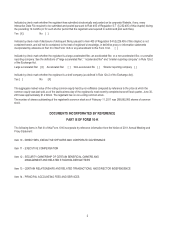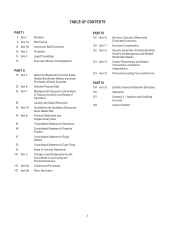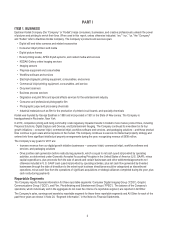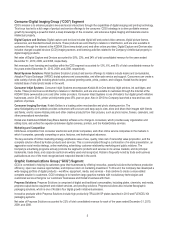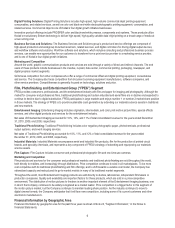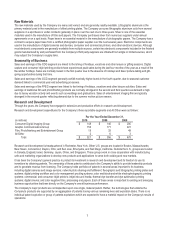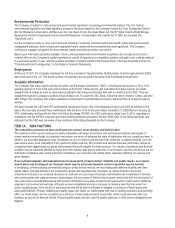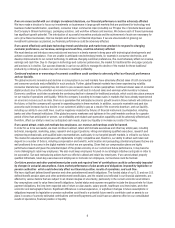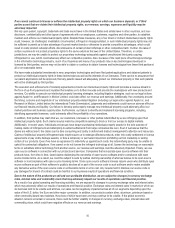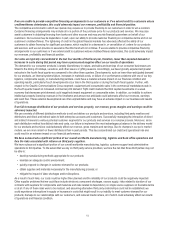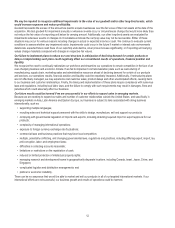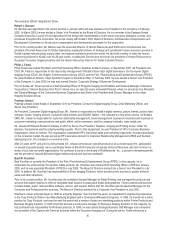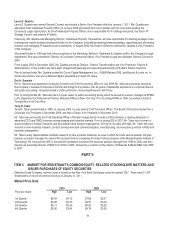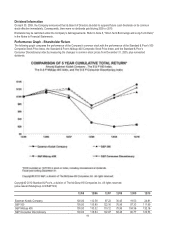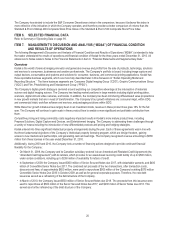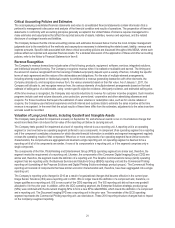Kodak 2010 Annual Report Download - page 14
Download and view the complete annual report
Please find page 14 of the 2010 Kodak annual report below. You can navigate through the pages in the report by either clicking on the pages listed below, or by using the keyword search tool below to find specific information within the annual report.
12
We may be required to recognize additional impairments in the value of our goodwill and/or other long-lived assets, which
would increase expenses and reduce profitability.
Goodwill represents the excess of the amount we paid to acquire businesses over the fair value of their net assets at the date of the
acquisition. We test goodwill for impairment annually or whenever events occur or circumstances change that would more likely than
not reduce the fair value of a reporting unit below its carrying amount. Additionally, our other long-lived assets are evaluated for
impairments whenever events or changes in circumstances indicate the carrying value may not be recoverable. Either of these
situations may occur for various reasons including changes in actual or expected income or cash. We continue to evaluate current
conditions to assess whether any impairment exists. Impairments could occur in the future if market or interest rate environments
deteriorate, expected future cash flows of our reporting units decline, silver prices increase significantly, or if reporting unit carrying
values change materially compared with changes in respective fair values.
Our failure to implement plans to reduce our cost structure in anticipation of declining demand for certain products or
delays in implementing such plans could negatively affect our consolidated results of operations, financial position and
liquidity.
We recognize the need to continually rationalize our workforce and streamline our operations to remain competitive in the face of an
ever-changing business and economic climate. If we fail to implement cost rationalization plans such as restructuring of
manufacturing, supply chain, marketing sales and administrative resources ahead of declining demand for certain of our products
and services, our operations results, financial position and liquidity could be negatively impacted. Additionally, if restructuring plans
are not effectively managed, we may experience lost customer sales, product delays and other unanticipated effects, causing harm
to our business and customer relationships. Finally, the timing and implementation of these plans require compliance with numerous
laws and regulations, including local labor laws, and the failure to comply with such requirements may result in damages, fines and
penalties which could adversely affect our business.
Our future results could be harmed if we are unsuccessful in our efforts to expand sales in emerging markets.
Because we are seeking to expand our sales and number of customer relationships outside the United States, and specifically in
emerging markets in Asia, Latin America and Eastern Europe, our business is subject to risks associated with doing business
internationally, such as:
• supporting multiple languages;
• recruiting sales and technical support personnel with the skills to design, manufacture, sell and support our products;
• complying with governmental regulation of imports and exports, including obtaining required import or export approval for our
products;
• complexity of managing international operations;
• exposure to foreign currency exchange rate fluctuations;
• commercial laws and business practices that may favor local competition;
• multiple, potentially conflicting, and changing governmental laws, regulations and practices, including differing export, import, tax,
anti-corruption, labor, and employment laws;
• difficulties in collecting accounts receivable;
• limitations or restrictions on the repatriation of cash;
• reduced or limited protection of intellectual property rights;
• managing research and development teams in geographically disparate locations, including Canada, Israel, Japan, China, and
Singapore;
• complicated logistics and distribution arrangements; and
• political or economic instability.
There can be no assurance that we will be able to market and sell our products in all of our targeted international markets. If our
international efforts are not successful, our business growth and results of operations could be harmed.


